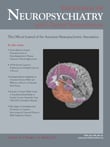The amygdala, or is it? Neuroscientists for so long have given pride of anatomical and physiological place to the prettily shaped hippocampus, with its neat boundaries and pleasing to the eye structure, that its close, rather unattractive neighbor has been somewhat neglected. Although there has been much animal work on the amygdala, and its relation to behavior, it is modern brain imaging that has brought the amygdala to the forefront of clinical and research interest, but there has been an absence up to now of a comprehensive update devoted to the human amygdala. This book is therefore an important contribution to the field.
The text begins with an overview of the primate amygdala, revealing its very wide connections, and reveals one of the problems—the amygdala is not quite as it appears, it is a composite of heterogeneous nuclei, at least 13. And sadly, we are told that the human amygdala is far less studied, and its connectivity is largely unknown. There then follows several chapters on what animal studies have told us about the possible functions of the amygdala, its role in fear and fear conditioning being of perhaps most interest. However other chapters note its function in positive reinforcement, in memory formation and other topics.
The chapter on methodological approaches to studying the human amygdala is of help to those who wish to follow the developing story of the role of the amygdala in human activity. This is followed by a chapter critically viewing the studies on the relationship between the amygdala and fear. The amygdala as a relevance detector, evaluating the emotional significance of events, prioritizing cognitions is one view. For it seems that the amygdala responds in f MRI studies, not only to fearful faces, the image most displayed, at meetings but probably to a range of expressions including humor—the emotional arousal may be more important than the valence.
All of this has relevance for clinical psychiatry. The fact that the amygdala responsiveness relates to personality traits, and is altered in certain disorders, such as anxiety, schizophrenia and autism advances our understanding of the biological basis of psychiatric syndromes in an important way.
Some aspects are disappointingly missing. Where is epilepsy? Dismissed in half a page: and sadly no discussions of the important work of two neuroscientists who have considerably enhanced our interest in the amygdala, namely Paul MacLean and the late Lennart Heimer.
What is clear is that the amygdala is not a unitary nucleus, and much work is now being done on establishing the potential activities of the various subnuclei that comprise the whole. However it is also clear that when the amygdala speaks, most of the brain listens—and the message is worth paying attention to.
Question: does anyone know the plural of amygdala? amygdali, amygdale, amygdalae, amygdales?

